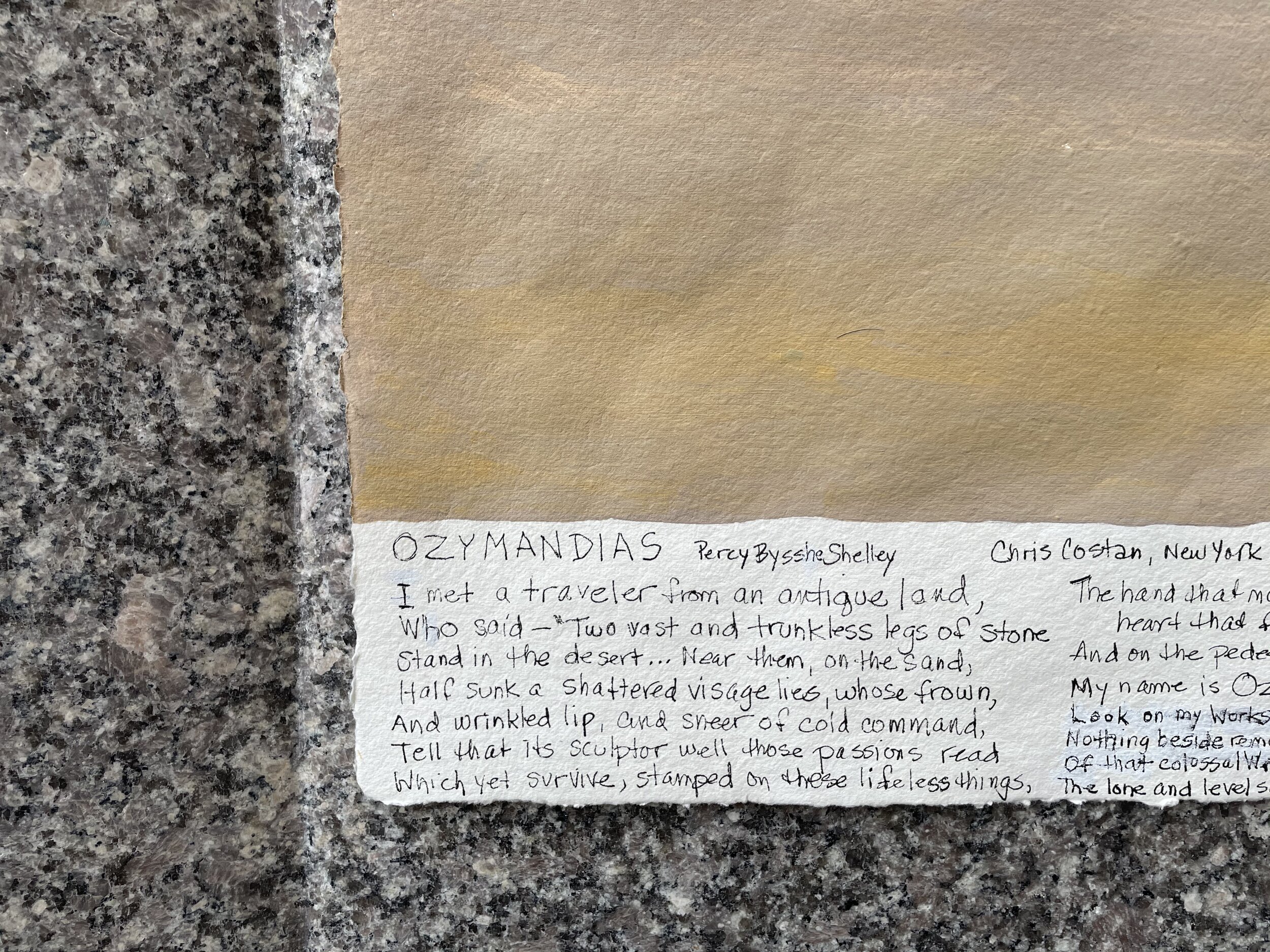interventions: Ozymandias
Ozymandias
by Percy Bysshe Shelley
I met a traveller from an antique land,
Who said—“Two vast and trunkless legs of stone
Stand in the desert. . . . Near them, on the sand,
Half sunk a shattered visage lies, whose frown,
And wrinkled lip, and sneer of cold command,
Tell that its sculptor well those passions read
Which yet survive, stamped on these lifeless things,
The hand that mocked them, and the heart that fed;
And on the pedestal, these words appear:
My name is Ozymandias, King of Kings;
Look on my Works, ye Mighty, and despair!
Nothing beside remains. Round the decay
Of that colossal Wreck, boundless and bare
The lone and level sands stretch far away.”
The referenced king above is Ramesses II, ruler of Upper Egypt for 67 years in the 13thc BC and conqueror of non-Egyptian tribes.
A statue, thought to be Ramses II was found near the ruins of Ramses II’s temple in the ancient city of Heliopolis. Destroyed in Greco-Roman times, the Temple of Ra-Atum was one of the largest in Egypt, almost double the size of Luxor’s Karnak, and dedicated to the cult of the sun god Atum, who came to be identified with Ra and then Horus. Ramses II – also known as Ramses the Great – ruled for 66 years from 1279 to 1213 BCE. Later Egyptians called him the “Great Ancestor”. His reign was marked by numerous military campaigns, most of them to take back territories lost to Egypt during the rule of previous pharaohs.
The selection of images below documents two out of five rogue events installed in November 2020, New York, NY, materials: acrylic paint, acid-free ink, archival watercolor paper (26 X 19 inches)



